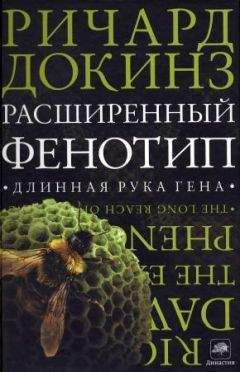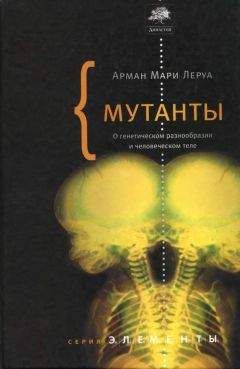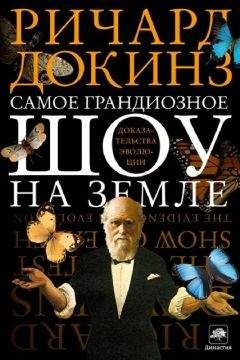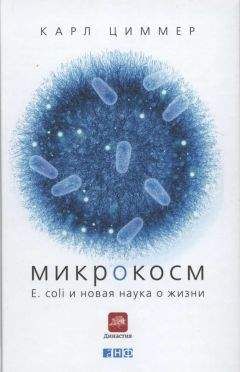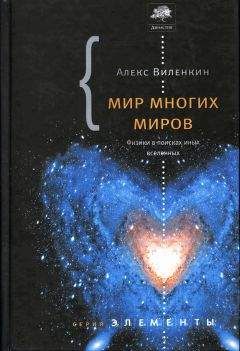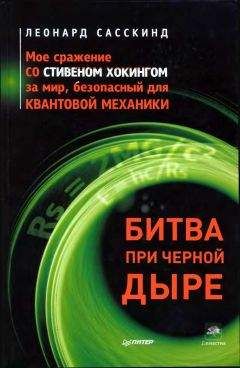Pringle, J. W. S. (1951). On the parallel between learning and evolution. Behaviour 3, 90-110.
Pugh, G. E. (1980). Behavioral science and the teaching of human values. UNESCO Review of Education. Vol.26, 2,103–120 Pulliam, H. R. & Dunford, C. (1980). Programmed to Learn. New York: Columbia University Press.
Pyke, G. H., Pulliam, H. R. & Charnov, E. L. (1977). Optimal foraging: a selective review of theory and tests. Quarterly Review of Biology 52, 137–154Raup, D. М., Gould, S. J., Schopf, T. J. M. & Simberioff, D. S. (1973). Stochastic models of phylogeny and the evolution of diversity. Journal of Geology 81, 525–542.
Reinhard, E. G. (1956). Parasitic castration of Crustacea. Experimental Parasitology 5, 79-107.
Richmond, M. H. (1979). «Cells» and «organisms» as a habitat for DNA. Proceedings of the Royal Society of London, В 204, 235–250.
Richmond, М. H. & Smith, D. C. (1979). The Cell as a Habitat. London: Royal Society.
Ridley, M. (1980a). Konrad Lorenz and Humpty Dumpty: some ethology for Donald Symons. Behavioral and Brain Sciences 3,196.
Ridley, M. (1982). Coadaptation and the inadequacy of natural selection. British Journal for the History of Science 15, 45–68.
Ridley, М. & Dawkins, R. (1981). The natural selection of altruism. In Altruism and Helping Behavior (eds J. R Rushton & R. M. Sorentino), pp. 19–39. Hillsdale, N.J.: Erlbaum.
Ridley, M. & Grafen, A. (1981). Are green beard genes outlaws? Animal Behaviour 29, 954–955.
Ridley, M. & Grafen, A. (in press). Are green beard genes outlaws? Animal Behaviour
Rose, S. (1978). Pre-Copernican sociobiology? New Scientist 80, 45–46. Rothenbuhler, W. C. (1964). Behavior genetics of nest cleaning in honey bees. IV. Responses of Fi and backcross generations to disease-killed brood. American Zoologist 4, 111–123. {282}
Rothstein, S. I. (1980). The preening invitation or head-down display of parasitic cowbirds. II. Experimental analysis and evidence for behavioural mimicry. Behaviour 75,148–184.
Rothstein, S. I. (1981). Reciprocal altruism and kin selection are not clearly separable phenomena. Journal of Theoretical Biology 87, 255–261.
Sahlins, M. (1977). The Use and Abuse of Biology. London: Tavistock. Sargent, T. D. (1968). Cryptic moths: effects on background selection of painting the circumocular scales. Science 159,100–101.
Sargent, T. D. (1969a). Background selections of the pale and melanic forms of the cryptic moth Phigalia titea (Cramer). Nature 222, 585–586.
Sargent, T. D. (1969b). Behavioural adaptations of cryptic moths. III. Resting attitudes of two bark-like species, Melanolophia canadana and Catocala ultronia. Animal Behaviour, 17, 670–672.
Schaller, G. B. (1972). The Serengeti Lion. Chicago: Chicago University Press.
Schell, J. + 13 others (1979). Interactions and DNA transfer between Agrobacterium tumefaciens, the Ti-plasmid and the plant host. Proceedings of the Royal Society of London, В 204, 251–266.
Schlei DT, W. M. (1973). Tonic communication: continual effects of discrete signs in animal communication systems. Journal of Theoretical Biology 42, 359–386.
Schmidt, R. S. (1955). Termite (Apicotermes) nests — important ethological material. Behaviour 8, 344–356.
Schuster, P. & Sigmund, K. (1981). Coyness, philandering and stable strategies. Animal Behaviour 29,186–192.
Schwagmeyer, P. L. (1980). The Bruce effect: an evaluation of male/female advantages. American Naturalist 114, 932–938.
Seger, J. A. (1980). Models for the evolution of phenotypic responses to genotypic correlations that arise in finite populations. PhD thesis, Harvard University, Cambridge, Mass.
Shaw, G. В. (1921). Back to Methuselah. Reprinted 1977. Harmondsworth, Middx: Penguin.
Sherman, P. W. (1978). Why are people? Human Biology 50, 87–95. Sherman, P. W. (1979). Insect chromosome numbers and eusociality. American Naturalist 113, 925–935.
Simon, C. (1979). Debut of the seventeen year cicada. Natural History 88 (5), 38–45‘. Г 7
Simon, H. A. (1962). The architecture of complexity. Proceedings of the American Philosophical Society 106, 467–482.
Simpson, G. G. (1953). The Major Features of Evolution. New York: Columbia University Press.
Sivinski, J. (1980). Sexual selection and insect sperm. Florida Entomologist 63, 99-111.
Slatkin, M. (1972). On treating the chromosome as the unit of selection. Genetics 72,157–168.
Slatkin, M. & Maynard Smith, J. (1979)- Models of coevolution. Quarterly Review of Biology 54, 233–263.
Smith, D. C. (1979). From extracellular to intracellular: the establishment of a symbiosis. Proceedings of the Royal Society of London, В 204,115–130. Southwood, T. R. E. (1976). Bionomic strategies and population parameters. In Theoretical Ecology (ed. R. M. May), pp. 26–48. Oxford: Blackwell Scientific.
Spencer, H. (1864). The Principles of Biology, Vol. 1. London and Edinburgh: Williams and Norgate.
Staddon, J. E. R. (1981). On a possible relation between cultural transmission and genetical evolution. In Perspectives in Ethology, Vol. 4 (EDS P. P. G. Bateson & P. H. Klopfer), pp. 135–145. New York: Plenum Press.
Stamps, J. & Metcalf, R. A. (1980). Parent-offspring conflict. In Sociohiology: Beyond Nature /Nurture? (eds G. W. Barlow & J. Silverberg), pp. 589–618. Boulder: Westview Press.
Stanley, S. M. (1975). A theory of evolution above the species level. Proceedings of the National Academy of Sciences, U.S.A. 72, 646–650. Stanley, S. M. (1979). Macroevolution, Pattern and Process. San Francisco: W H. Freeman.
Stebbins, G. L. (1977). in defense of evolution: tautology or theory? American Naturalist 111, 386–390.
Steele, E. J. (1979). Somatic Selection and Adaptive Evolution. Toronto: Williams and Wallace.
Stent, G. (1977). You can take the ethics out of altruism but you can’t take the altruism out of ethics. Hastings Center Report 7 (6), 33–36.
Symons, D. (1979). The Evolution of Human Sexuality. New York: Oxford University Press.
Syren, R. М. & Luyckx, R (1977). Permanent segmental interchange complex in the termite Incisitermes schwärzt. Nature 266,167–168.
Taylor, A. J. P. (1963). The First World War. London: Hamish Hamilton. Temin, H. M. (1974). On the origin of RNA tumor viruses. Annual Review of Ecology and Systematics 8, 155–177.
Templeton, A. R., Sing, C. F. & Brokaw, B. (1976). The unit of selection in Drosophila mercatonum. I. The interaction of selection and meiosis in parthenogenetic strains. Genetics 82, 349–376.
Thoday, J. M. (1953). Components of fitness. Society for Experimental Biology Symposium 7, 96-113.
Thomas, L. (1974). The Lives of a Cell. London: Futura.
Thompson, DA. W. (1917). On Growth and Form. Cambridge: Cambridge University Press.
Tinbergen, N. (1954). The origin and evolution of courtship and threat display. In Evolution as a Process (eds J. S. Huxley, A. C. Hardy & E. B. Ford), pp. 233–250. London: Allen & Unwin.
Tinbergen, N. (1963). On aims and methods of ethology. Zeitschrift fur Tierpsychologie 20, 410–433.
Tinbergen, N. (1964). The evolution of signaling devices, in Social Behavior and Organization among Vertebrates (ed. W. Etkin), pp. 206–230. Chicago: Chicago University Press.
Tinbergen, N. (1965). Behaviour and natural selection. In Ideas in Modern Biology (ed. J. A. Moore), pp. 519–542. New York: Natural History Press. Tinbergen, N., Broekhuysen, G. J., Feekes, F., Houghton, J. G. W., Kruuk, H. & Szulc, E. (1962). Egg shell removal by the black-headed gull, Lams ridibundus, L.; a behaviour component of camouflage. Behaviour 19, 74-117. Trevor-Roper, H. R. (1972). The Last Days of Hitler. London: Pan. Trivers, R. L. (1971). The evolution of reciprocal altruism. Quarterly Review of Biology 46, 35–57.
Trivers, R. L. (1972). Parental investment and sexual selection. In Sexual Selection and the Descent of Man (ed. B. Campbell), pp. 136–179. Chicago: Aldine.
Trivers, R. L. (1974). Parent-offspring conflict. American Zoologist 14, 249–264.
Trivers, R. L. & Hare, H. (1976). Haplodiploidy and the evolution of the social insects. Science 191, 249–263.
Turing, A. (1950). Computing machinery and intelligence. Mind 59, 433–460. Turnbull, C. (1961). The Forest People. London: Cape.
Turner, J. R. G. (1977). Butterfly mimicry: the genetical evolution of an adaptation. In Evolutionary Biology, Vol. 10 (eds M. K. Hecht et al.), pp. 163–206. New York: Plenum Press.
Vermeij, G. J. (1973). Adaptation, versatility and evolution. Systematic Zoology 22, 466–477.
Vidal, G. (1955). Messiah. London: Heinemann.
Waddington, C. H. (1957). The Strategy of the Genes. London: Allen & Unwin.
Wade, M. J. (1978). A critical review of the models of group selection. Quarterly Review of Biology 53,101–114.
Waldman, B. & Adler, K. (1979). Toad tadpoles associate preferentially with siblings. Nature 282, 611–613.
Wallace, A. R. (1866). Letter to Charles Darwin dated 2 July. In J. Marchant (1916) Alfred Russel Wallace Letters and Reminiscences, Vol. 1, pp. 170–174. London: Cassell.
Watson, J. D. (1976). Molecular Biology of the Gene. Menlo Park: Benjamin. Weinrich, J. D. (1976). Human reproductive strategy: the importance of income unpredictability, and the evolution of non-reproduction. PhD dissertation, Harvard University, Cambridge, Mass.
Weizenbaum, J. (1976). Computer Power and Human Reason. San Francisco: W H. Freeman.
Wenner, A. M. (1971). The Bee Language Controversy: An Experience in Science. Boulder: Educational Programs Improvement Corporation.
Werren, J. H., Skinner, S. K. & Charnov, E. L. (1981). Paternal inheritance of a daughterless sex ratio factor. Nature 293, 467–468. West-Eberhard, M. J. (1975). The evolution of social behavior by kin selection. Quarterly Review of Biology 50, 1-33.
West-Eberhard, M. J. (1979). Sexual selection, social competition, and evolution. Proceedings of the American Philosophical Society 123, 222–234.
White, M. J. D. (1978). Modes of Speciahon. San Francisco: W H. Freeman. Whittiam, T. G. & Slobodchikoff, C. N. (1981). Evolution of individuals, plant-herbivore interactions, and mosaics of genetic variability: the adaptive significance of somatic mutations in plants. Oecologia. 49, 287–292.
Whitney, G. (1976). Genetic substrates for the initial evolution of human sociality. I. Sex chromosome mechanisms. American Naturalist 110, 867–875. Wickler, W. (1968). Mimicry. London: Weidenfeid & Nicolson.
Wickler, W. (1976). Evolution-oriented ethology, kin selection, and altruistic parasites, Zeitschrift fur Tierpsychologie 42, 206–214.
Wickler, W. (1977). Sex-linked altruism, Zeitschrift fur Tierpsychologie 43, 106–107.
